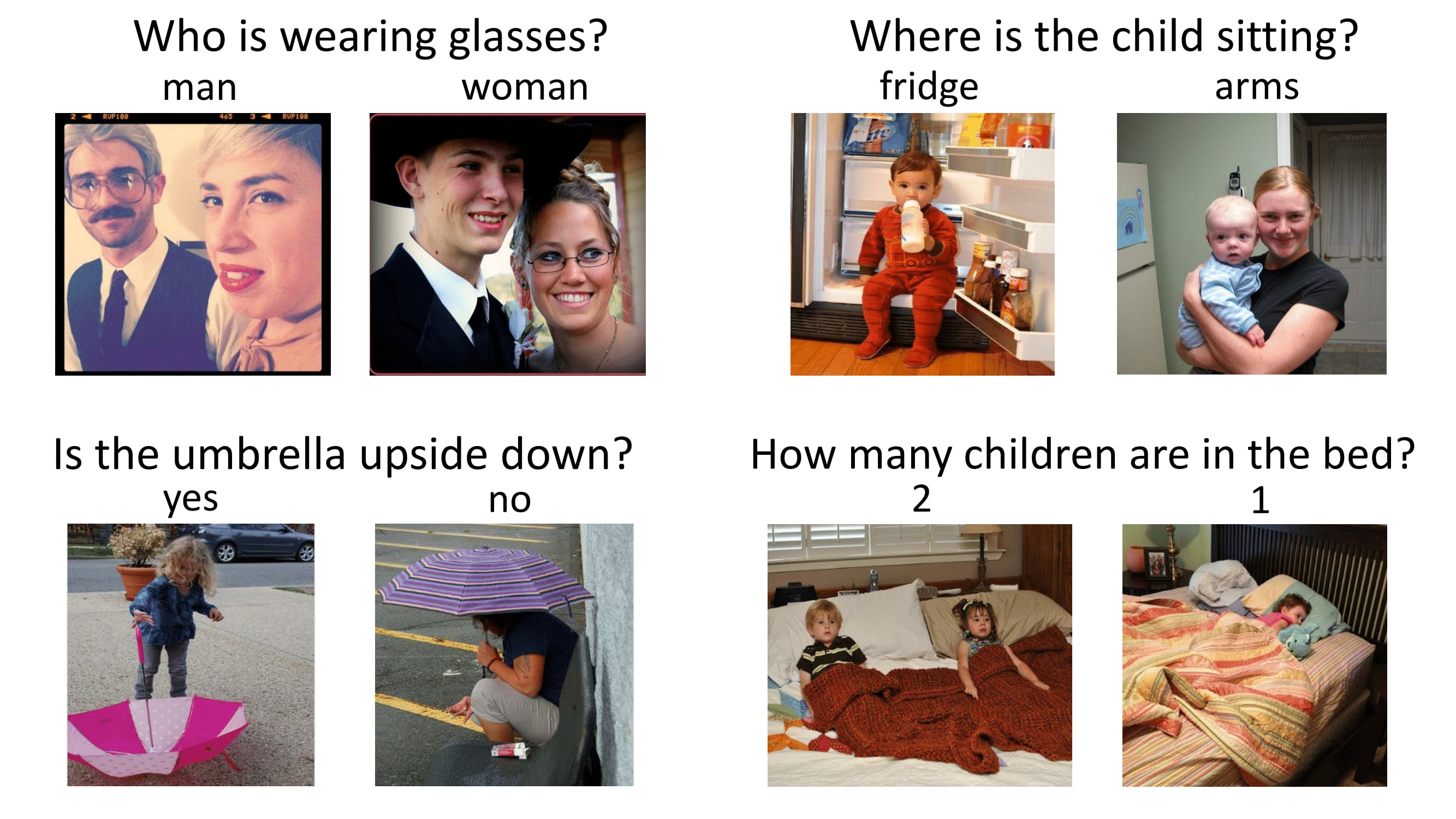Summary - Neural Module Networks
Research Paper - https://arxiv.org/abs/1511.02799
Authors - Jacob Andreas, Marcus Rohrbach, Trevor Darrell, Dan Klein
Key Idea
Parse questions of visual QA into a description of compositions of functions. These functions are neural networks called Neural Modules. Execute the neural networks and reweigh the resulting label using question representation.

Task - Visual Question Answering
Given a question like “What color is the coffee mug?” and an image we want to predict the answer.

Prior approaches
- End to End neural networks
- Use a CNN to vectorize the image and RNN to vectorize the question and use a feed forward network to classify the answer.
- This is a black box trying to answer in one shot.
- Semantic Parsing approach
- Parse the question into logical expressions, image into logical representation of the world and use logic based reasoning to solve the problem.
- This is more compositional.
Motivation
- Combine the representational capacity of neural nets and compositionality of symbolic approach.
- So, “Rather than thinking of question answering as a problem of learning a single function to map from questions and contexts to answers, it’s perhaps useful to think of it as a highly-multitask learning setting, where each problem instance is associated with a novel task, and the identity of that task is expressed only noisily in language.”
- Simple example - “Is this a truck?” - Needs single task to be performed, namely truck or not classification.
- Compositional example - “What is the object to the left of the tea pot?” - Needs one to find the teapot, detect object to its left, then classify the object.
Architecture
Neural Modules
- Identify set of modules that can be composed to solve all/most tasks.
- Modules can be thought of as a function parametrized by a neural network, with a type signature.
- Data Types - Image, Unnormalized attention map, labels
Strings -> Modules
- Parsing
- Use few rules on dependency parse of the question to convert it into a structured query.
- e.g. “Is there a circle next to a square?” -> is(circle, next-to(square))
- Layout
- “All leaves become attend modules, all internal nodes become
re-attend or combine modules dependent on their arity, and root nodes become measure modules for yes/no questions and classify modules for all other question types.”
- The queries could come from anywhere not just natural language question. As long as they can be converted to a layout in the end.
- “All leaves become attend modules, all internal nodes become
re-attend or combine modules dependent on their arity, and root nodes become measure modules for yes/no questions and classify modules for all other question types.”
Answering
- An RNN is used to process the question and predict a label directly without looking into the image.
- This is combined with the final label from the root node of the Neural Modules using geometric mean to get the final result.
- This is done for 2 reasons
- Syntactic Regularity/Prior
- When converting to structured query, certain syntactic elements are lost.
- For e.g. What is in the sky? and What are in the sky? both result in what(fly).
- But answer varies from kite to kites.
- Semantic Regularity/Prior
- Some answers are unreasonable just by inspecting the question.
- For example, What colour is the bear? eliminates all non-colour answers.
- Some answers are unreasonable just by inspecting the question.
- Syntactic Regularity/Prior
Benchmarks
- They try this in vqa dataset - https://visualqa.org/ a huge dataset with natural images and questions with answers.
- Since VQA doesn’t have many deep compositional questions, they use shapes a synthetically generated dataset.
Examples
- What colour is his tie?









Comments